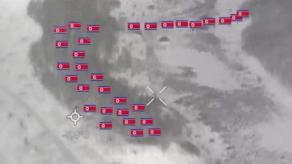The United States is developing the Extended-Range Attack Munition (ERAM), an air-launched smart weapon for Ukraine that can be described as a hybrid of a guided aerial bomb and a small-sized cruise missile.
Documents revealing the details of this project were released in open access the other day, as noticed by Aviation Week. According to the papers, the ERAM will feature a 260-kilogram warhead, with armor-piercing or high-explosive action, but the overall weight of the munition is not specified. The estimated range is 250 nautical miles (463 kilometers), the minimum speed is Mach 0.6, (740 km/h).
Read more: What Are Ukraine's Chances of Getting 128 F-16 Fighters to Reach Minimum Parity with russia?

The U.S. weapon designers expect the ERAM to show hit accuracy within 10 meters of the target and its guidance systems to operate normally under active electronic warfare suppression.
Other than these fragmented details, information about the ongoing project remains limited. The U.S. Air Force is the customer, having submitted the inquiry for development on January 31, 2024. It is not clear whether the initiative came from the American or Ukrainian side.
But the most unusual part is the development timeline and production pace: mass manufacture is slated to start no later than 24 months after the contract has been awarded, with an expected annual output of up to 1,000 units.

Also, the picture still lacks crucial details about which types of aircraft ERAM will be compatible with. Namely, if it will be Ukraine's older Soviet or upcoming Western jets that will carry and launch these munitions. Although, against the background of such protracted development timeframe and pace of deliveries, it is a secondary issue.
The deadline of "no later than 24 months" and the volume of 1,000 units per year are surprising, especially considering that the U.S. already has similar technologies in development that could simply be scaled up and manufactured for Ukraine. All the more so because those projects have been worked upon for several years now.
Examples include the Powered JDAM, which is basically a Boeing's attempt to attach an engine to the Joint Direct Attack Munition (JDAM) to create a hybrid bomb-cruise missile, and the Enterprise Test Vehicle (ETV) Project, which aims to reduce the cost of cruise missiles to $150,000 from $2 million, with several proposals in development.

Read more: UMPB Extended-Range Bomb Created in russia, Deployed by Aircraft or Tornado-S Ground Launchers














